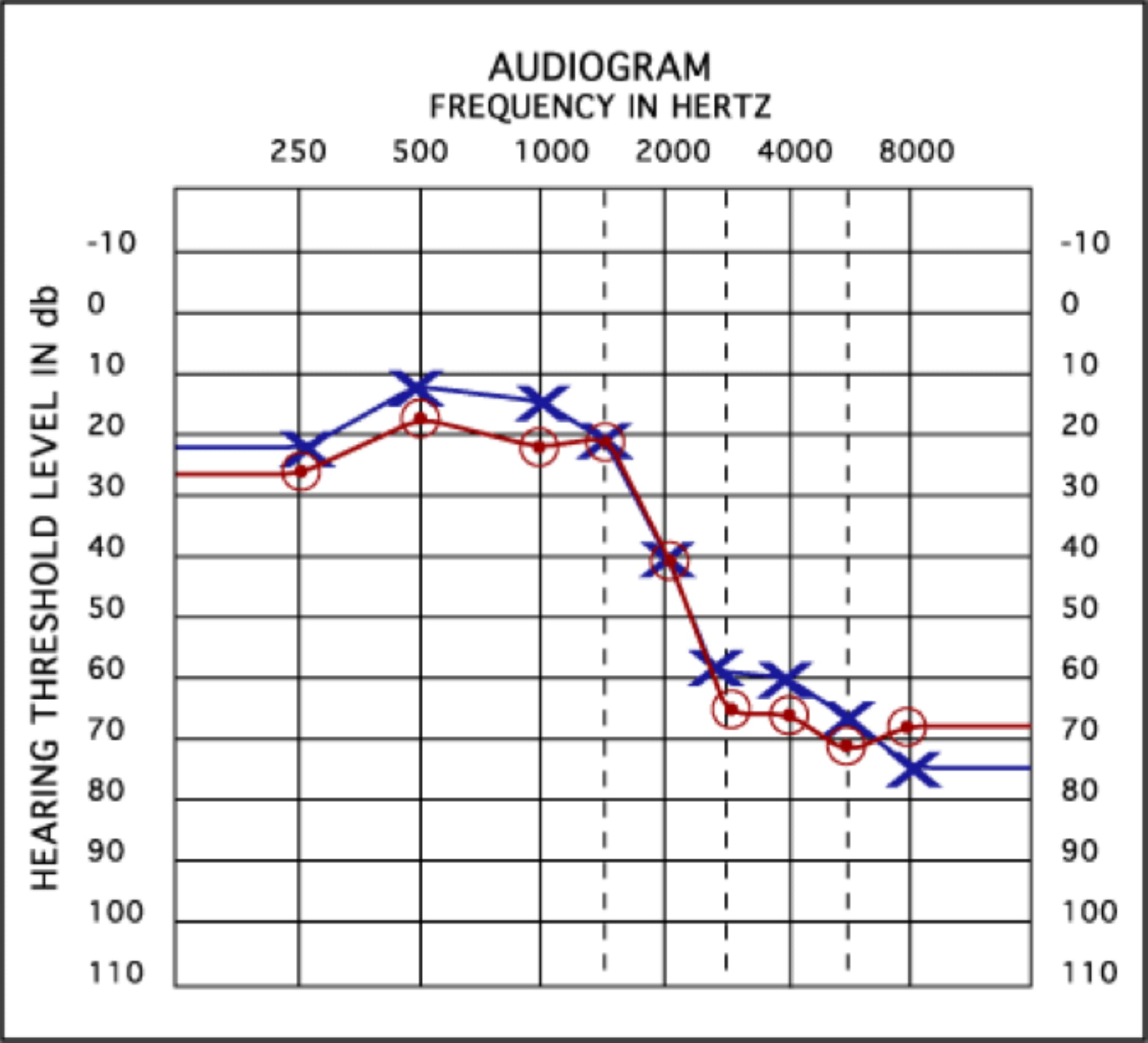Hearing Tests
Hearing tests help determine which areas of the ear are causing your hearing impairment. The following hearing tests are offered at Kaiser Permanente Hearing Centers in Northern California. To learn more about which hearing tests may be used to diagnose your hearing loss, find a hearing center close to you.

Audiological Evaluation
This test determines your hearing ability relative to normal hearing levels. If hearing loss is found, this test also informs your audiologist about the location and classification of the hearing loss, helping to determine treatment options. Hearing aids and enhanced communication strategies may be discussed following this test. View the audiogram to the right, the standard way of graphically representing a person’s hearing loss.
Tympanometry
This examination assesses the operational status of the middle ear, which consists of the eardrum and three small bones that connect the eardrum to the inner ear. Middle ear blockages or malfunctions discovered during this test often can be treated medically or surgically to improve hearing.
Acoustic Reflexes and Reflex Decay
This test evaluates the auditory nerve’s ability to transmit hearing signals to the brain. Blockages along this pathway would indicate the need for further medical consultation.
Auditory Brain-stem Response (ABR) Testing
During this evaluation, electrical nerve impulses that carry the sound from the inner ear to the brain are measured. Electrodes are placed on the ear lobes and on the head, and by tracking your body’s response to short clicking sounds the audiologist can determine if there are any blockages or interruptions to the nerve impulses.
Otoacoustic Emissions
This test evaluates the functioning of the outer hair cells in the inner ear. Otoacoustic emissions are acoustic signals generated by the normal inner ear, either in the absence of acoustic stimulation (spontaneous emissions) or in response to acoustic stimulation (acoustically-evoked emissions). These emissions can be measured by placing a microphone in the opening of the ear canal and analyzing the signals obtained.

